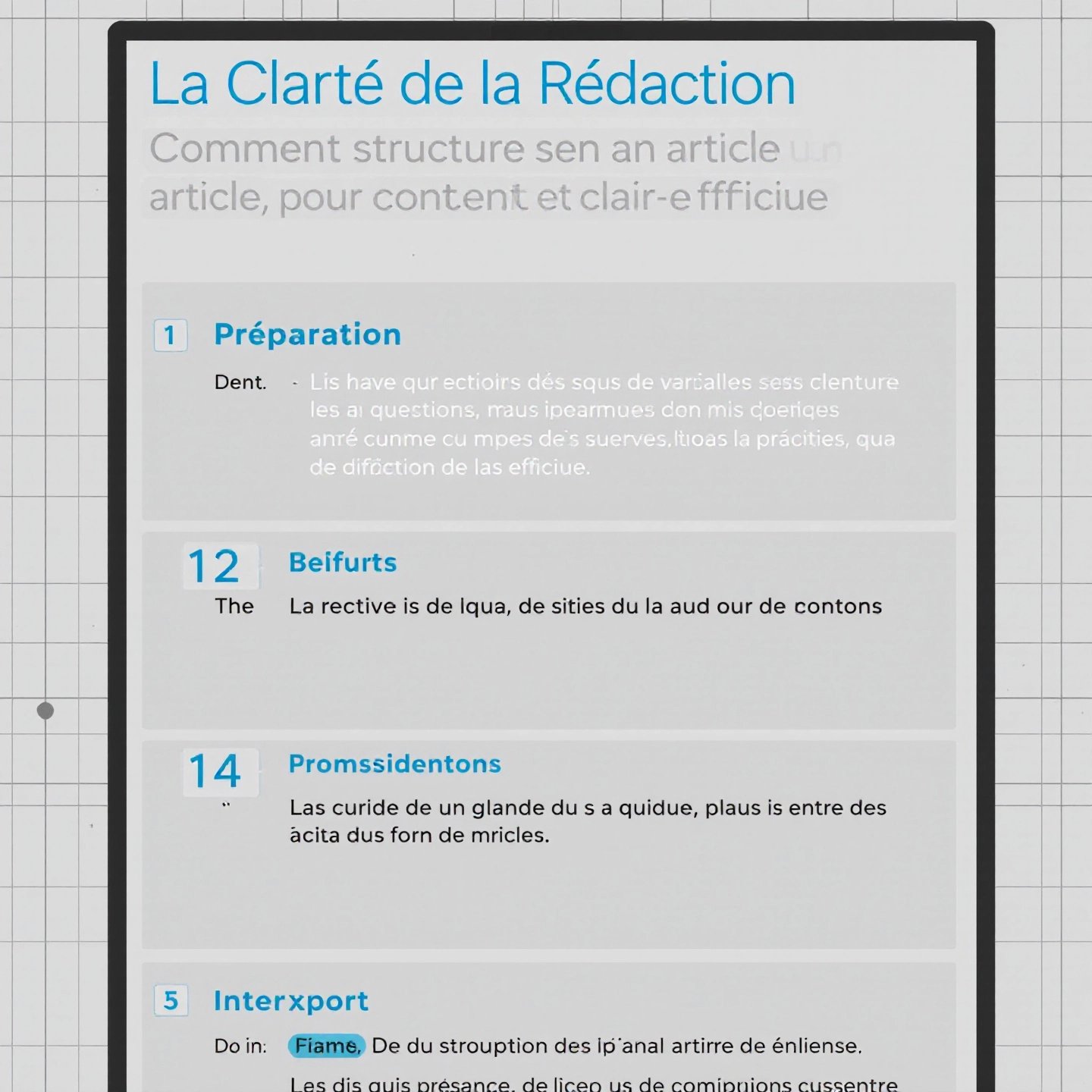Introduction to Writing a Blog Post
Writing a blog post is more than just putting words on a page; it's a strategic process that plays a crucial role in content marketing and personal branding. In today's digital age, blogs are powerful tools that help businesses and individuals connect with audiences, enhance visibility, and establish authority in their fields. But how do you write a blog post that stands out? Understanding the key steps involved is essential.
First, you need to identify your target audience and define the purpose of your post. This step sets the foundation for creating content that resonates. Next, thorough research and strategic planning are vital to ensure your content is informative and relevant. Crafting an engaging headline, structuring your post for readability, and writing compelling content are all critical components. Finally, editing, proofreading, and optimizing for SEO ensure your blog post is polished and ready to reach its intended audience.
Throughout this guide, we'll explore each of these steps in detail, providing you with the tools and insights needed to craft blog posts that captivate and convert. Whether you're a seasoned blogger or just starting, this expert guide will help you master the art of blogging.
Understanding Your Audience and Purpose
Before you dive into writing, it's crucial to understand who you are writing for and why. Knowing your blog post audience is the cornerstone of crafting content that resonates and engages. Imagine trying to sell a product without knowing who might buy it—sounds challenging, right? The same principle applies to blogging. By defining your target audience, you can tailor your message to meet their specific needs and interests.
Identifying Your Ideal Reader
Start by creating a detailed profile of your ideal reader. Consider demographics such as age, gender, location, and interests. What problems do these demographics face that your content can solve? For instance, if you're writing a blog about sustainable living, your audience might include environmentally conscious individuals seeking practical tips on reducing their carbon footprint. Use tools like surveys and social media analytics to gather insights into your audience's preferences and behaviors. Adobe's guide on target audiences offers valuable steps to refine this process.
Aligning Content with Audience Needs
Once you've identified your audience, align your content to address their needs directly. This means crafting posts that solve problems, answer questions, or provide insights relevant to them. According to the Content Marketing Institute, aligning content with audience interests improves engagement and builds brand loyalty. Consider the purpose of your blog post—whether it's to inform, entertain, or persuade—and ensure that every element of your content supports this goal. By focusing on what your audience cares about, you’ll capture their attention and encourage them to return for more.

Conducting In-Depth Research and Planning
Before you start writing your blog post, conducting thorough research and strategic planning is crucial. Imagine trying to build a house without a blueprint—sounds chaotic, right? The same goes for writing a blog post. Research and planning lay the groundwork for creating content that is not only informative but also credible and engaging.
Why Research Matters
Research is the backbone of any well-crafted blog post. It ensures that your content is accurate, up-to-date, and valuable to your readers. According to Ghost.org, good research helps you discover and support ideas, making your blog posts stand out online. By investing time in research, you can provide readers with the best information on a subject, enhancing your authority and trustworthiness.
Effective Blog Research Methods
To streamline your research process, start by gathering resources such as articles, videos, and data from reputable sources. Use search engines with advanced operators to narrow down results, and consider tools like Notion for organizing your findings. As you research, focus on identifying key points and supporting data that align with your blog's purpose. Avoid the trap of information overload by setting clear research goals and knowing when to stop.
| Research Task | Method | Resources |
|---|---|---|
| Identify Main Ideas | Brainstorm and outline | Notion, Google Docs |
| Gather Supporting Data | Online search, expert interviews | Google Scholar, Statista |
| Analyze Competitors | Review similar content | BuzzSumo, Ahrefs |
| Organize Findings | Create an outline | Ulysses, iA Writer |
Strategic Planning for Your Blog Post
Once your research is complete, the next step is strategic planning. This step involves creating a clear outline that guides your writing process. A well-structured outline helps you maintain focus, ensuring that your content flows logically and covers all necessary points. It also makes the writing process more efficient, allowing you to fill in the gaps with your knowledge and research seamlessly.
By combining thorough research with strategic planning, you'll be well-equipped to write a blog post that not only informs but also captivates your audience. This foundation sets the stage for crafting a compelling headline, which we'll explore next.
Crafting a Compelling and SEO-Optimized Headline
Creating a headline that grabs attention while optimizing for SEO is a crucial step in writing a blog post. Your headline is the first impression readers get, and it plays a significant role in determining whether they'll click through to read more. But how do you craft an effective SEO blog headline?
Elements of a Successful Headline
Firstly, a successful headline must promise a benefit or solve a problem for the reader. According to Orbit Media, a headline acts as a promise to the reader, indicating the value of the content. Use specific and compelling language to convey this promise. For example, instead of a generic 'How to Write a Blog Post,' consider 'Master the Art of Blogging: Proven Steps to Write Engaging Posts.'
SEO Considerations
From an SEO perspective, including your primary keyword naturally within the headline is essential. The keyword should ideally appear at the beginning to enhance keyphrase prominence, as suggested by Semrush. This helps search engines understand the content and aligns with search intent, increasing the chances of your post appearing in relevant searches.
Crafting the Perfect Headline
- Use Numbers: Headlines with numbers often perform better as they set clear expectations for the reader. For instance, '5 Tips for Crafting SEO-Optimized Headlines.'
- Incorporate Power Words: Words like 'Ultimate,' 'Essential,' and 'Proven' can add an emotional appeal, making your headline more enticing.
- Keep It Clear and Concise: Aim for a headline length that fits within 60 characters to avoid truncation in search results, ensuring the complete message is visible.
By combining these elements, you can craft a headline that attracts clicks and enhances your blog post's SEO performance. With a compelling headline in place, you're ready to structure your blog post for optimal readability, which we'll discuss next.

Structuring Your Blog Post for Readability
When it comes to writing a blog post, the structure is just as important as the content itself. A well-organized blog post structure enhances readability and improves the overall user experience, making it easier for readers to digest information quickly. But how do you achieve this?
Using Headings and Subheadings
Headings and subheadings serve as signposts that guide the reader through your content. They break up large blocks of text, making your post easier to scan. Using clear and descriptive headings helps readers understand the different sections of your article at a glance. Aim to use headings that are concise and informative, giving readers a preview of what to expect in the section.
Formatting for Quick Scanning
In addition to headings, consider other formatting techniques to enhance readability. Bullet points and numbered lists are excellent for presenting information in a digestible format, especially when listing steps, tips, or features. Short paragraphs and sentences also contribute to a more reader-friendly experience, particularly for mobile users who prefer content that can be easily consumed on smaller screens.
- Use Bullet Points: Ideal for lists and key points, making information easy to grasp.
- Keep Paragraphs Short: Limit paragraphs to three sentences to maintain reader interest.
- Highlight Key Information: Use bold or italics to emphasize important concepts.
By implementing these structural elements, you’ll ensure that your blog post is not only engaging but also accessible to a wider audience. As you continue to write, remember that a well-structured blog post is a cornerstone of effective content strategy, paving the way for more detailed discussions in subsequent sections.
Writing Engaging Content with a Bottom-of-the-Funnel Approach
Creating engaging blog content that speaks directly to potential buyers is an art that combines understanding your audience with strategic writing techniques. Imagine you're at the bottom of a sales funnel; your readers are almost ready to make a decision. How do you ensure your content nudges them in the right direction?
Understanding Persuasive Writing Techniques
Engaging blog content isn't just about presenting information; it's about persuasion. According to MasterBlogging, persuasive writing involves strategically presenting facts, using logic, and carefully selecting words to influence readers. Start by addressing a common problem your audience faces, then offer solutions that your blog post services can solve. This approach not only captures interest but also sets the stage for action.
Using Storytelling and Visuals
Stories resonate deeply with readers, making them powerful tools for engagement. Share relatable anecdotes or success stories that illustrate the benefits of your services. Coupled with visuals like infographics or videos, storytelling can make complex information more digestible and memorable. The blog, Social, highlights that visuals break up text and provide a quick way to absorb information, enhancing the reader's experience.
Incorporating Calls-to-Action (CTAs)
Effective CTAs guide readers toward the next step, whether it's signing up for a newsletter or purchasing a service. Position your CTAs strategically within your content to maintain a natural flow. Encourage interaction by posing questions or inviting readers to share their thoughts, fostering a sense of community and engagement.
Leveraging Tools for Efficiency
To streamline your content creation, consider using AI tools like BlogSpark. BlogSpark helps automate writing tasks, allowing you to focus on crafting compelling narratives that align with your brand's voice. Its SEO-focused outlining ensures your posts are not only engaging but also optimized for search engines, enhancing visibility and reach.
By mastering these techniques, you can create blog content that engages and converts, effectively guiding your readers through the final stages of their decision-making process. As you refine your writing, remember that the ultimate goal is to provide value and foster a connection with your audience, encouraging them to take action.

Editing, Proofreading, and Optimizing for SEO
Editing and proofreading are crucial steps in the process of creating a blog post, ensuring that your content is polished and professional. But how do you refine your blog post to make it both error-free and SEO-optimized? Imagine you've crafted a beautiful sculpture; editing is the final touch that brings out its true beauty.
Steps for Effective Editing and Proofreading
The first step in editing is to step away from your draft for a few hours or even a day. This break allows you to return with fresh eyes, making it easier to spot errors. Begin by reading your content aloud, which helps in catching awkward phrases and grammatical mistakes. According to Tanishka Makkar, reading aloud forces you to slow down and pay attention to each word, enhancing your ability to identify mistakes.
- Check for Consistency: Ensure that your tone, style, and formatting are consistent throughout the post.
- Eliminate Redundancies: Remove repetitive words and phrases to make your writing clear and concise.
- Use Tools Wisely: Tools like Grammarly or Hemingway can help identify errors, but remember to use them as guides rather than absolute authorities.
Optimizing for SEO
SEO is just as important as editing. Start by ensuring that your primary keyword and related terms are naturally integrated throughout your post. As highlighted by Yoast, avoid keyword stuffing, which can harm your readability and search rankings. Instead, focus on creating a seamless flow that naturally incorporates SEO elements.
- Meta Descriptions: Write a compelling meta description that includes the primary keyword and entices readers to click.
- Internal Linking: Link to other relevant posts on your site to improve navigation and SEO.
- Image Optimization: Use alt text for images to enhance accessibility and SEO.
By following these editing and SEO steps, you'll ensure your blog post is not only polished and professional but also primed for high search engine rankings. With your post refined and optimized, you’re ready to publish and share your insights with the world.
Conclusion
As we've explored throughout this guide, writing a blog post is a multifaceted process that involves understanding your audience, conducting thorough research, crafting compelling headlines, and structuring content for readability. Each step is crucial in creating content that not only engages but also converts. Could you please explain why planning is so essential in this process?
Effective blog post planning serves as the backbone of successful content creation. It helps you align your posts with your strategic goals, ensuring that each piece contributes to your overarching mission. According to ProBlogger, strategic planning allows you to focus your efforts, making your blogging more impactful and sustainable over time.
To enhance your content creation process, consider utilizing tools like BlogSpark. BlogSpark streamlines the planning and writing stages, offering features like intelligent keyword discovery and SEO-focused outlining. These tools save time and ensure your posts are optimized for maximum reach and engagement.
Incorporating strategic planning and leveraging tools like BlogSpark can transform your blogging from a casual endeavor into a powerful marketing strategy. By focusing on planning, you position yourself to produce high-quality content that resonates with your audience, drives traffic, and achieves your blogging objectives.
Frequently Asked Questions
1. How do you write a simple blog post?
To write a simple blog post, focus on addressing a compelling topic with a clear layout. Begin by crafting a captivating headline, carefully planning your post, and write genuinely. Incorporate SEO techniques and propose solutions to engage readers effectively.
2. How do I start writing a blog?
Begin by choosing a blogging platform like WordPress or Blogger. Please plan your topics and posting schedule, and then write your first post introducing yourself and your blog. Promote your blog through social media and continue writing consistently.
3. What is the 80/20 rule for blogging?
The 80/20 rule suggests that 80% of your results come from 20% of your efforts. In blogging, this means focusing on the most impactful posts that drive the majority of your traffic and engagement.
4. How can I make my blog post more engaging?
Use storytelling, visuals, and persuasive writing techniques. Incorporate calls-to-action and leverage tools like BlogSpark to streamline content creation. Tailor content to address your audience's needs and foster interaction.
5. What are the key elements of an SEO-optimized blog post?
An SEO-optimized blog post includes a compelling headline with keywords, structured content with headings, internal links, and a meta description. Optimize images with alt text and ensure natural keyword integration throughout the post.




